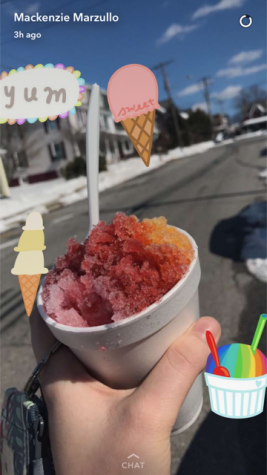The Evolution of Music: The 80s Full of Colors, MTV and Icons
May 14, 2019
Music in the 1980s reflected the beginning of a period with great income disparity, and a focus on affluence was shown in the music.
There were also many new genres that popped up including: hip hop, new wave and hair metal, all of which have influenced music today.
Arguably the most important event to influence music during the 1980s was the creation of the cable network MTV (Music Television).
MTV was the first network to exclusively showcase music videos, making its debut on Aug. 1, 1981.
The original concept of the network was to play music videos twenty-four hours a day, every day.
While this has obviously changed since then, the innovative concept created a whole new breed of pop star: becoming iconic mascots for the genre and defining the decade through fashion, talent and persona.
Some of the superstars to emerge were Madonna, Michael Jackson, Whitney Houston and Prince.
They experienced a level of fame and success not seen since Elvis Presley and the Beatles. These stars influenced fashion through their music videos, giving fans a first hand glimpse into emerging trends.
Their songs set the gold standard for what pop music should be, and through constant reinvention they were able to navigate the pop culture world and keep themselves relevant. Thirty years later, they are still the standard that today’s pop stars are compared to.
“I think that modern day music is losing the power and messages that music had in the 80s. There [were] iconic and new sounds that were not usually seen together, and now it’s all the same. I wish music would just go back to the real stuff,” said sophomore Katie Henry.
There are several reasons they these pop mega-stars emerged, the main one being they were genuinely talented artists.
Other reasons include a greater public interest in celebrity gossip, fashion and and increased obsession with pop culture.
Changes in technology also contributed to the availability of music (MTV), better ways to listen (CDs and cassettes) and portability of music (the Walkman and boom-boxes).
One trend in pop music during the decade was the re-emergence of older musicians who had once been popular as a part of a group or duo into their own solo careers.
Some examples include Diana Ross, Cher, Lionel Richie, Tina Turner and Paul McCartney.
These artists had already experienced success during the 1960s and 1970s and a few of them had even tried becoming actors during that time.
They also came into successful solo careers after adapting to the new musical landscape.
Cher, Tina Turner and Diana Ross all updated their looks to keep up with fashion, Lionel Richie made memorable music videos and adapted his soulful sound into the new style of pop music and Paul McCartney collaborated with other successful musicians to keep himself relevant.
The eighties was the decade of one hit wonders, where an artist would achieve massive success with one or two extremely popular songs and then seemingly fade away, never able to re-create their success.
Record companies could now make just as much money by manufacturing one-hit artists in succession while not having to invest the time and money that would make a mediocre musician into a star with more longevity.
Trends were also changing more quickly and many artists could not keep up and adapt fast enough.
Some of the most memorable one hit wonders from the decade include, a-ha’s “Take On Me,” Soft Cell’s “Tainted Love,” Toni Basil’s “Mickey,” Nena’s “99 Luftballons” and Dexy’s Midnight Runners’ “Come On Eileen.”
Hip hop/rap music originated in African American communities in New York City in the 1970s and became more mainstream and part of popular culture in the mid to late 1980s.
As the genre gained traction on MTV, it gave the white middle class a glimpse into inner city culture and many conservative parents of the time were disapproving of the genre that had been called the “new rock n’ roll.”
Key elements of the genre include sampling old records, rapping lyrics, fun sounds with an underlying message, beat-boxing and electronic sounds.
Hip hop music sounded like nothing that had been heard before in mainstream music and the late 1980s was thought of as the Golden Age, were everything seemed original and innovative. The New Wave genre began in the 1970s and was popular until the mid-1980s.
The focus of this music was on artistic themes and the sound was tied to punk rock, dance music, synthesizers and other electronic instruments.
New Wave eventually became tied to pop music as music videos from the genre were heavily promoted on MTV.
The term “New Wave” is meant as an all encompassing term that allows a variety of highly diverse artists to fit into the same category.
Some artists had a futuristic sound while others were closer to punk rock.
New Wave bands and artists had an impact on fashion with their unique clothing and hairstyles that the youth culture would adopt.
Many of the decades one hit wonders fell into this genre.
Some of the definitive New Wave bands were Duran Duran, Blondie, Billy Idol, the Talking Heads, and Culture Club.
“In the end, this era, in my opinion, marked the end of a musical empire. Anything beyond this point, should and can be considered modern type music,” said Henry.




